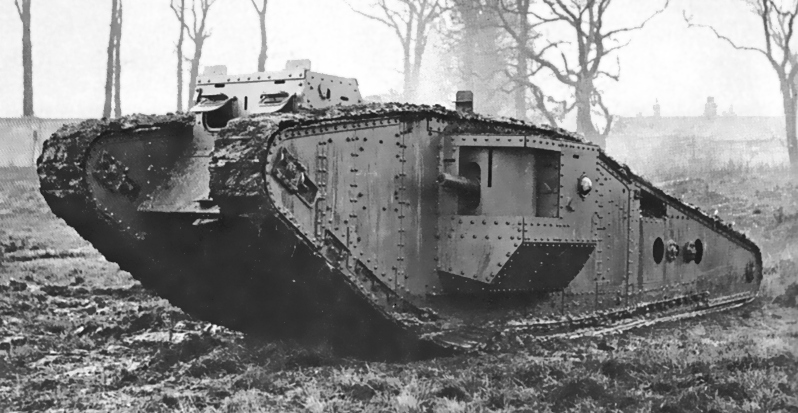Following the end of World War I English towns which had raised the most money received various military gifts for public display, such as a German machine gun or field gun.
The town of Millom got a tank from the War Savings Organisation, as did other communities, for an exhibit at their public park. Getting it there was a quite a task. Part of the procedure was to get the behemoth as near as possible by rail.
Large crowds would gather to observe engineers as they first attempted to fire up the unreliable 105hp Daimler ‘Silent Knight’ engine, then drive the tank to the exhibit platform.
The arrival of Millom’s tank was a story in the February 27, 1920, edition of the Millom Gazette.
The article noted the Mark IV 26-ton female tank had been in active service with G Battalion.
The mud-stained tank was masterfully guided to its final place of honor – a layer of concrete, located partly up the slope about an equal distance from the Bank of Liverpool and the allotments adjacent to the Temperance Hall.
Getting it from the railway station to its final resting place was a long and noisy affair.
The town of Barrow’s gift from the War Savings Organisation was also a tank; it arrived February 26, 1920, and driven to Walney burning about five gallons of fuel for each mile while grunting, snorting, and spewing petrol fumes.
Ulverston’s tank arrived the same day as Barrow’s. At the time it was noted that a “monster” had appeared and was not a pretty sight, North-West Evening Mail reported.
Virtually all the tanks disappeared before the Second World War. Millom residents didn’t want to be reminded of war, besides which it was reportedly home to rats and viewed as a blemish.
It was sold for £11 by the Millom Council. Similarly, Ulverston came to its end in 1936 when the tank was broken up for scrap. The local scrap company discovered a live shell in the machine’s gears. The tank was sold by Ulverston Urban District Council.
